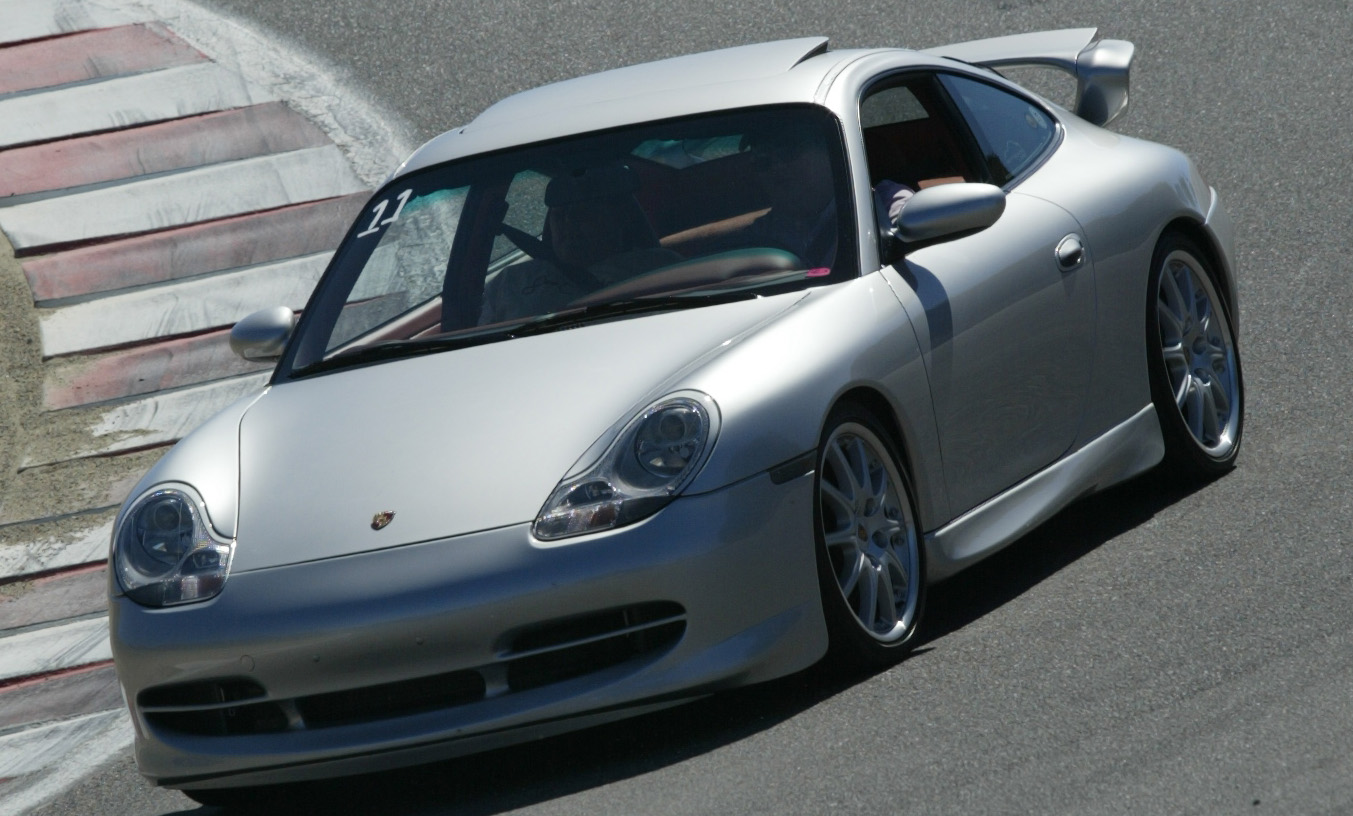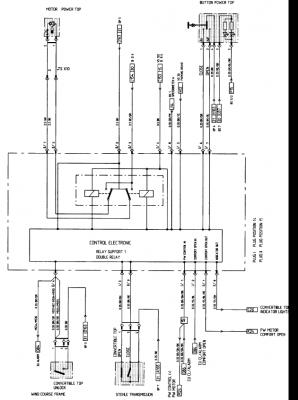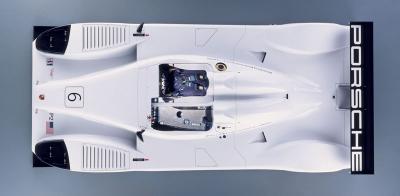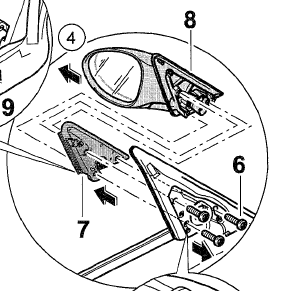Welcome to RennTech.org Community, Guest
There are many great features available to you once you register at RennTech.org
You are free to view posts here, but you must log in to reply to existing posts, or to start your own new topic. Like most online communities, there are costs involved to maintain a site like this - so we encourage our members to donate. All donations go to the costs operating and maintaining this site. We prefer that guests take part in our community and we offer a lot in return to those willing to join our corner of the Porsche world. This site is 99 percent member supported (less than 1 percent comes from advertising) - so please consider an annual donation to keep this site running.
Here are some of the features available - once you register at RennTech.org
- View Classified Ads
- DIY Tutorials
- Porsche TSB Listings (limited)
- VIN Decoder
- Special Offers
-
OBD II P-Codes - Paint Codes
- Registry
- Videos System
- View Reviews
- and get rid of this welcome message
It takes just a few minutes to register, and it's FREE
Contributing Members also get these additional benefits:
(you become a Contributing Member by donating money to the operation of this site)
- No ads - advertisements are removed
- Access the Contributors Only Forum
- Contributing Members Only Downloads
- Send attachments with PMs
- All image/file storage limits are substantially increased for all Contributing Members
- Option Codes Lookup
- VIN Option Lookups (limited)
-
Posts
37,322 -
Joined
-
Days Won
533
Content Type
Profiles
Events
Forums
External Paint Colors
Downloads
Tutorials
Links Directory
Collections
Store
Posts posted by Loren
-
-
So is this a "Poser" or the "Real Deal"? ;) ;)
-
They are almost exactly the same.
-
If George is getting his soon then we can do both at once. If not at a work on cars day then you folks can drive down to beautiful Morgan Hill ;)
-
Sorry folks we can not post copyrighted materials here with out the copyright owners permission or the copyright owner putting their materials in the public domain.
-
Generically they mean:
P0155 O2 Sensor Heater Circuit Malfunction (Bank 2 Sensor 1)
P0175 System too Rich (Bank 2)
P0172 System too Rich (Bank 1)
Bank 2 (cyl 4-6) Sensor 1 (before the cat) and P0155 says that the O2 sensor is not heating. Unless the wiring harness has been damaged or the connection is corroded it is likely that you need a new O2 sensor.
-
1. They were about $450 when I bought mine.Folks, I am contemplating to have a 3rd radiator added to my C2 ( 1999) and I am wondering :1/ what does the radiator cost?
2/ what is involved in the installation?
3/ how much would installation cost
4/ what temperature drop could one expect compared with the stock 2 radiators?
The reason? I feel that the engine ( here in California) is running pretty hot ( gauge is indicating between the 8 and the zero of the (180) number and sometimes goes just on top of the zero number.
Cheers
HarryR
PS Loren, I just bought a B@M short shifter today ( eBay at $ 199.00 plus freight). I will be looking for your help :-)
2. See 3rd Radiator Install Instructions
3. About 4-5 hours labor.
4. See item 2.
Your current temp is normal. I bought mine for track days and fun runs through the mountains.
-
Model of car? Year of car? Aftermarket addons?
-
-
Great Don, thanks!
-
Porsche Releases Initial Details New Prototype Racecar
ATLANTA, June 21, 2005 – Porsche today disclosed early technical information and images of the first prototype racecar it has designed and constructed since the 1998 24 Hours of Le Mans winning Porsche 911® GT1. The new model was commissioned by Porsche Cars North America, Inc. (PCNA) and Porsche Motorsport North America (PMNA) for racing customers who compete in the LMP2 (Le Mans Prototype 2) class of the American Le Mans Series (ALMS). It features a completely new Porsche engine, transmission, and chassis, all incorporating the latest in Porsche automotive technology and created to conform to new 2006 rules and regulations of international sanctioning body Automobil Club de l’Ouest (ACO).
The heart of the new Porsche LMP2 is its newly-designed 3.4-liter, 90-degree, V8 engine. Limited to 480 horsepower at 10,100 rpm by ACO air restrictor regulations, the power plant is lightweight with a very low center of gravity. It features four valves per cylinder, a dry sump lubrication system, and an air intake manifold with single cylinder throttle valves.
The engine is mated to a Porsche-engineered sequential six-speed constant mesh transmission. A structural part of the car, the gearbox is operated by a paddle shift system on the steering wheel and incorporates a triple-disc carbon fiber racing clutch.
Like the 1998 911 GT1 racecar and current Carrera® GT street car, the Porsche LMP2’s monocoque chassis is constructed of carbon fiber. Attached to this strong yet lightweight framework (built to the latest safety standards of international road racing) is a front and rear double-wishbone suspension with ball joints, adjustable front and rear anti-roll bars, and four-way shock absorbers. For optimal stopping performance, the braking system includes twin master cylinders, adjustable brake balance, and internally vented carbon brake discs (380 mm front and 355 mm rear). For driver comfort and safety, the new prototype is equipped with power steering and a tire pressure control system. An integral partner in the car’s development process, Michelin is supplying race tires for the new Porsche prototype.
Similar to modern aircraft construction, the bodywork is comprised of carbon fiber reinforced by Kevlar composites. Incorporating an adjustable rear wing, it has been created for maximum aerodynamic efficiency and the lowest possible weight and replacement cost. Considering the car is intended for customer teams, its LMP2 mandated weight of 1,653 lbs. or 750 kgs. was achieved through an integrated lightweight design rather than the mere use of expensive and exotic materials.
Penske Motorsports, Inc., a wholly owned subsidiary of Penske Racing, Inc., will field the new Porsche prototype in its first full season of competition exclusively in 2006. It is anticipated they will debut the new Porsche prototype at the final two races of the 2005 ALMS season, the Oct. 1st Petit Le Mans at Road Atlanta and the Oct. 16th season finale at Laguna Seca, as test events before entering the entire 2006 season.
Porsche Cars North America, Inc. (PCNA), based in Atlanta, Ga., and its subsidiary, Porsche Cars Canada, Ltd., are the exclusive importers of Porsche sports cars and Cayenne® sport utility vehicles for the United States and Canada.
A wholly owned, indirect subsidiary of Dr. Ing. h.c.F. Porsche AG, PCNA employs approximately 300 people who provide Porsche vehicles, parts, service, marketing and training for its 207 U.S. and Canadian dealers. They, in turn, provide Porsche owners with best-in-class service.
# # #
Contact:
Bob Carlson
Media Relations Manager, Automotive
(770) 290-3676
-
Yes, P code is P code these are universal (to some degree) for all OBD II cars.
Porsche fault codes for OBD II P codes are listed in a matrix here. We also have listing for most OBD II P codes here.
As I recall I think the PST2 can display either. Perhaps they need to go back to Porsche training school... ;)
-
Well, the P1123 and P1125 are almost opposite to P1124 and P1126. A P1123 and P1125 are too rich conditions - that is, the DME can not lean the mixture enough. P1124 and P1126 are too lean and the DME can not make the mixture rich enough.
If it were always P1123 and P1125 then the OBD II manual says check the fuel pump pressure and the EVAP canister purge valve (open).
Any changes recently like air filter or fuel filter? and are those codes with the MAF disconnected?
-
No I don't, I've never tried. Do you have just a hand grip? What are you trying to do?Loren,Do you know of a why to simply remove the handle grip and not the entire assembly? :help:
-
-
All P0xxx codes are standardized. However, each manufacturer may use additional codes which go beyond the standardized ones. This is the case if the manufacturer has integrated additional functions in the ECM beyond those required by law, and these can also be diagnosed.
These codes are referred to as P1xxx codes, e.g. "P1100".
The first character (letter) of a code identifies the system which has input the code. A total of four system types are covered: B for body; C for drive train; P for drive; U for future systems. The OBD II only requires the P code.
Any PST2 regardless of sofware version can read, report, and reset P codes, drive train, body codes, and U codes. This includes things like airbag lights, ABS faults, and alarm codes that a generic OBD II scan can not.
A yearly PST2 software upgrade licence use to run about $2500 per year. Since the PST2 has been replaced by the PIWIS tester I think the software updates are now done online (rather than CD as the PST2 was).
-
What are you cleaning the wheels with?
This could be covered under your warranty too.
-
I can not say that I always agree with the FIA rules but in this case I think they did the right thing - the Michelin teams did not.
FIA Statement on USGPWritten by: Adam Cooper Indianapolis, Ind. – 6/20/2005 The following statement was released Monday morning by the FIA, Formula’ 1’s governing body, regarding the controversy at the U.S. Grand Prix that led to the withdrawal of the 14 Michelin-tired cars before the start:
"Formula 1 is a sporting contest. It must operate to clear rules. These cannot be negotiated each time a competitor brings the wrong equipment to a race.
At Indianapolis, we were told by Michelin that their tires would be unsafe unless their cars were slowed in the main corner. We understood and among other suggestions offered to help them by monitoring speeds and penalizing any excess. However, the Michelin teams refused to agree unless the Bridgestone runners were slowed by the same amount. They suggested a chicane.
The Michelin teams seemed unable to understand that this would have been grossly unfair as well as contrary to the rules. The Bridgestone teams had suitable tires. They did not need to slow down. The Michelin teams’ lack of speed through turn 13 would have been a direct result of inferior equipment, as often happens in Formula 1. It must also be remembered that the FIA wrote to all of the teams and both tire manufacturers on June 1, 2005, to emphasise that “tires should be built to be reliable under all circumstances” (see correspondence on www.fia.com).
A chicane would have forced all cars, including those with tires optimized for high-speed, to run on a circuit whose characteristics had changed fundamentally – from ultra-high speed (because of turn 13) to very slow and twisting. It would also have involved changing the circuit without following any of the modern safety procedures, possibly with implications for the cars and their brakes. It is not difficult to imagine the reaction of an American court had there been an accident (whatever its cause) with the FIA having to admit it had failed to follow its own rules and safety procedures.
The reason for this debacle is clear. Each team is allowed to bring two types of tire: one an on-the-limit potential race winner, the other a back-up which, although slower, is absolutely reliable. Apparently, none of the Michelin teams brought a back-up to Indianapolis. They subsequently announced they were flying in new tires from France but then claimed that these too were unsafe.
What about the American fans? What about Formula 1 fans world-wide? Rather than boycott the race, the Michelin teams should have agreed to run at reduced speed in turn 13. The rules would have been kept, they would have earned Championship points and the fans would have had a race. As it is, by refusing to run unless the FIA broke the rules and handicapped the Bridgestone runners, they have damaged themselves and the sport.
It should also be made clear that Formula One Management and Indianapolis Motor Speedway, as commercial entities, can have no role in the enforcement of the rules."
Paris, June 20, 2005
-
Hehe... how did you think I knew not to drop it? ;)Easy task + tight space + 90 degrees = PITABTW, I tried not to lose the screws, but of course, managed to do so.
Thx all.
I bought a new one - then found the old one a year later when I was doing something else.
-
Tool Pants would know... he buys it by the gallon I think :lol:
-
1. Pull seat belt rose cover up and off.
2. Undo fastening screw behind it (be careful not to drop it into the chassis).
3. Detach side-panel lining by unscrewing the hex bolt for the rear seat latch. Pull locking lugs of side-panel lining out of the clips in the rear side section and move forward enough to get at the back of the speaker.
4. Disconnect the loudspeaker electrical plug connection and disconnect. Remove panel.
-
 1
1
-
-
I'll be surprised if your Auterra OBD II scanner can read alarm codes. Most of the aftermarket scanners can only do DME codes.
-
If your original know is from the Exclusive options then it has a set screw up under the boot near the knob. If it is a standard knob then you just twist and pull - you might want to lower the top as sometimes they pop right off when pulled. The new knob likely has a set screw to fasten it down.
-
Coupe or Cab? and MY please?
-
For no AC use belt part number 996 102 151 65.


-0001-0001.thumb.png.17f5bb25bf8ec261a17c21e6321c8492.png)





Fuel/Air Mixture to lean
in 986 Series (Boxster, Boxster S)
Posted
1. P1124/P1125 covers lean conditions (that the DME can not adjust for) at idle. P1128/P1130 cover lean conditions at close to full load.
2. Egas is not an option. It began on C4's (but not the C2) in 1999. All Carrera's have had egas since MY00. On the Boxster all 2.5' s do not have egas.
3. O2 sensors will deteriorate with age and either the sensor will stop sensing or the heater will not get the sensor hot enough. If you record your O2 readings using a scan toll you can watch the sensor deteriorate. Most folks just wait until a failing or failed sensor throws a CEL.